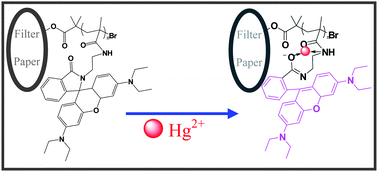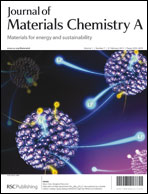Rhodamine derivative-modified filter papers for colorimetric and fluorescent detection of Hg2+ in aqueous media
Abstract
Mercury pollution is a widespread problem. In this work, a solid-state sensor based on rhodamine derivative-modified cellulose filter papers for detection of Hg2+ ions in aqueous media is demonstrated. A three-step approach, involving the introduction of atom transfer


 Please wait while we load your content...
Please wait while we load your content...